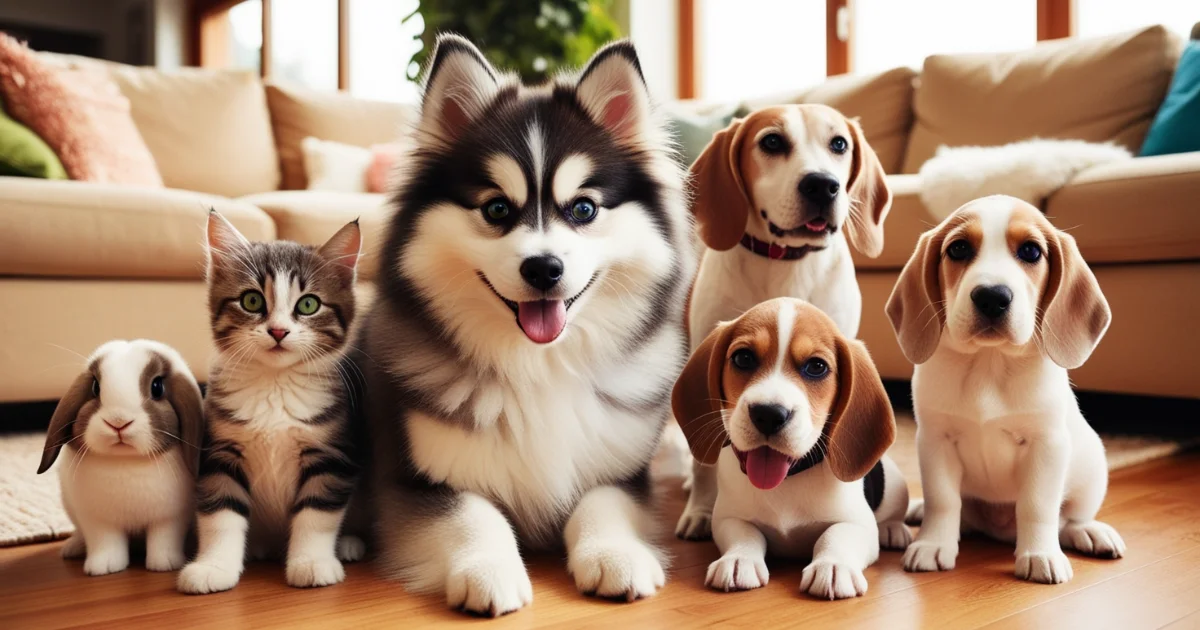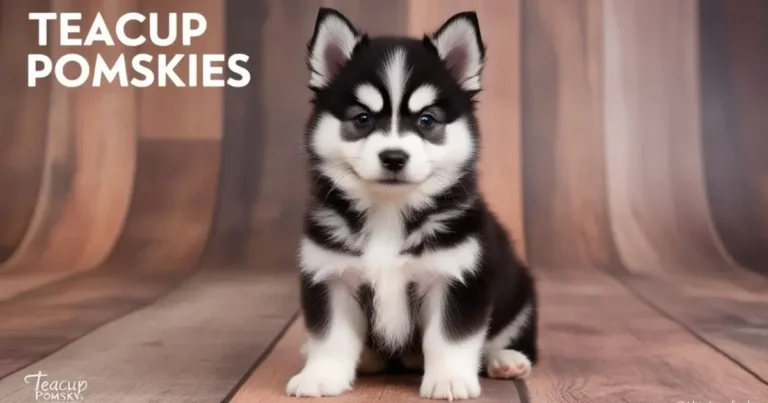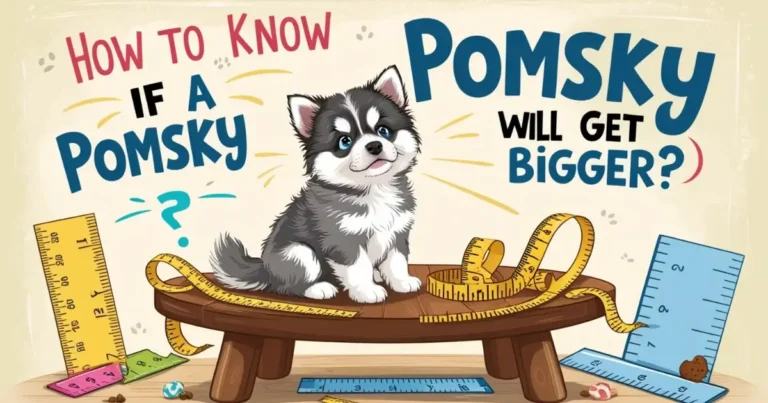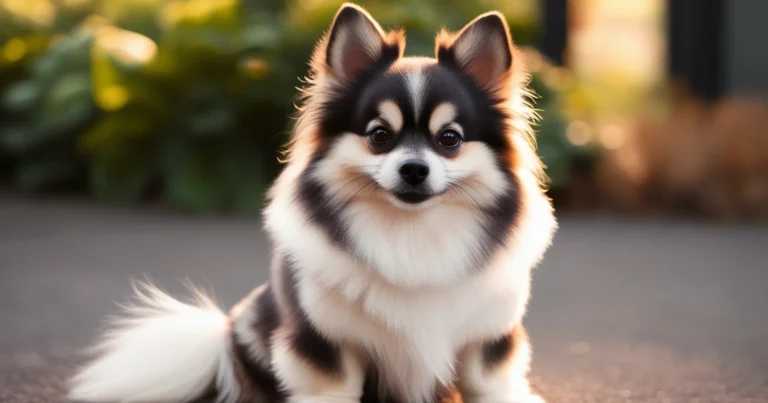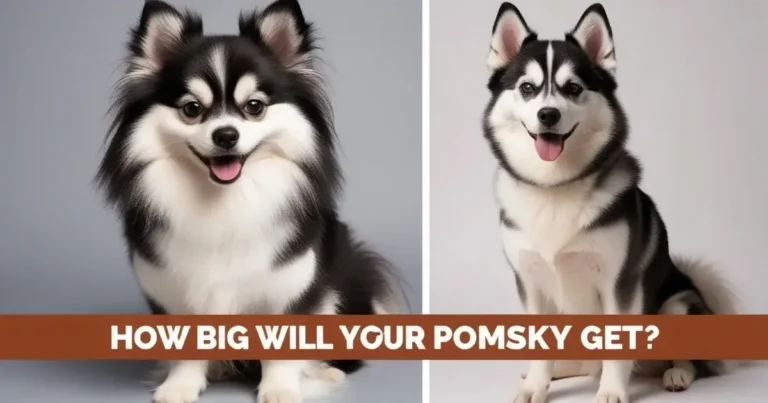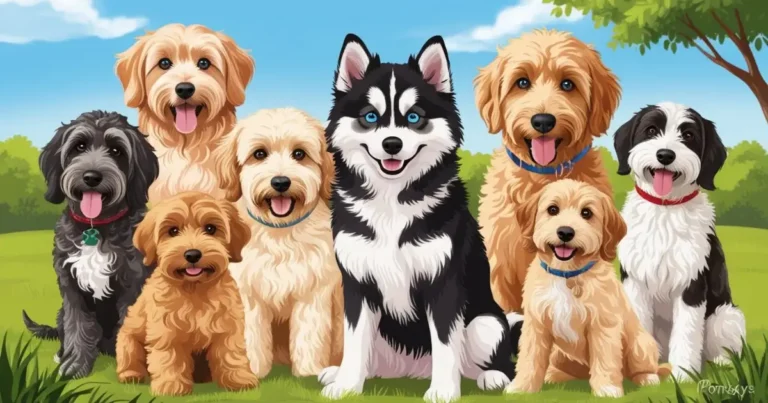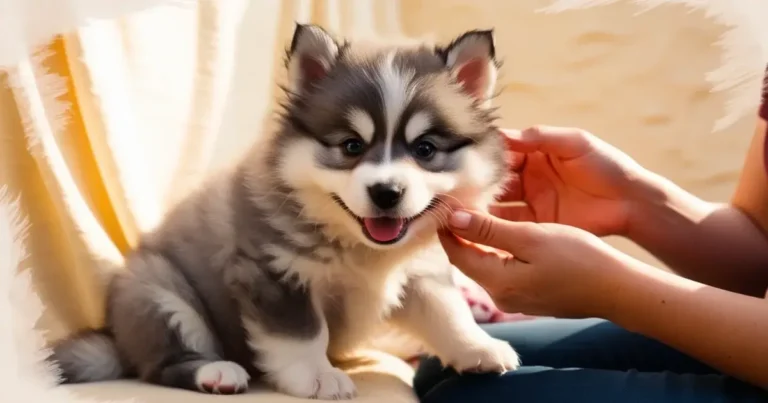Pomsky with Other Pets: Tips for a Multi-Pet Home
Pomskies are a unique blend of Pomeranians and Siberian Huskies—known for their appealing looks and lively personalities. With their small-to-medium size and affectionate nature, they’re popular among pet owners. But if you have other pets, like cats or dogs, you might wonder about Pomsky with other pets.
This guide explores how Pomskies interact with cats and other animals, offering tips on introducing a Pomsky to a multi-pet household.
Table of Contents
Understanding Pomsky Temperament and Behavior
Inherited Traits
Pomskies inherit a mix of characteristics:
- They’re energetic and playful, much like Huskies.
- They have an affectionate yet independent disposition, bonding closely with their families while also enjoying personal space.
- Pomskies may show a high prey drive, which could prompt them to chase smaller animals like cats if they’re not trained properly.
Suitability for Multi-Pet Households
Their friendly nature makes Pomskies compatible with multi-pet homes, though they may show territorial behaviors, especially around toys or food. Early training and socialization help prevent these issues.
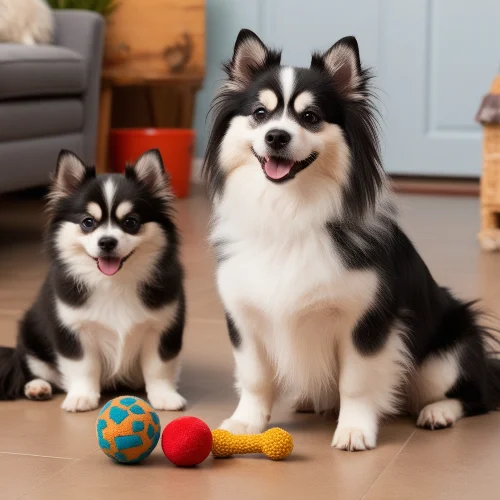
Factors Influencing Compatibility of Pomsky with Other Pets
Socialization from a Young Age
Early socialization is key for Pomskies. Exposing them to other animals during puppyhood helps them become comfortable in a multi-pet environment. This training encourages friendly behavior and reduces aggressive tendencies.
Playfulness and Energy Levels
With high energy levels, Pomskies often play vigorously. Households with other active pets are a better match to avoid overstimulation or rough play. Monitoring early interactions is essential to ensure harmony.
Territorial Tendencies
Pomskies can be possessive, especially over food or toys. To prevent conflicts, provide each pet with separate food bowls, sleeping areas, and toys. Positive reinforcement when they share space calmly can reduce territorial behaviors over time.
Introducing a Pomsky to Other Pets
Preparation Steps
Before introductions:
- Designate separate areas for each pet to make them feel secure.
- Set up individual food bowls, beds, and litter boxes to prevent competition.
Supervised Introductions
Follow a gradual introduction process:
- Begin with leashes or barriers for safety.
- Reward both pets for calm behavior.
- Carefully observe their body language to ensure they’re comfortable.
Behaviors to Watch For
During introductions, look for:
- Growling or snapping—signs of discomfort.
- Chasing—may indicate a prey response.
- Possessive gestures like guarding toys or food.
Special Considerations for Pomskies and Cats
Prey Drive and Safety
The Pomsky’s prey drive may lead it to chase smaller pets like cats. Training them to stay calm around cats helps reduce this instinct. Firm commands and consistent boundaries can redirect unwanted behaviors.
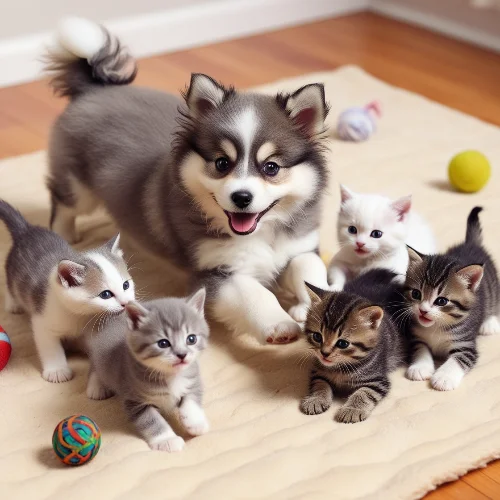
Creating Safe Spaces for Cats
Cats need safe spots to retreat, so providing high perches or separate rooms helps them feel secure. Reward Pomskies for staying calm when the cat is nearby, reinforcing good behavior and peaceful coexistence.
Living Conditions for a Multi-Pet Household with a Pomsky
Space and Exercise Needs
A Pomsky needs adequate space, especially in a multi-pet household. Having separate play areas prevents crowding and allows each pet a sense of ownership. Regular exercise through playtime and walks also keeps the Pomsky’s energy in check, benefiting all household pets.
Managing Resources
To prevent territorial disputes, assign each pet its own food and water bowls, beds, and toys. This approach minimizes competition and helps maintain a peaceful environment.
Training and Reinforcement
Importance of Training
Consistent training is essential for Pomskies. Focus on basic commands like “sit,” “stay,” and “leave it.” Reward good behavior with treats and praise whenever they act calmly around other pets.
Setting Boundaries
Help Pomskies understand boundaries around other pets by:
- Reinforcing positive interactions.
- Setting limits for shared spaces and rewarding them for respecting these boundaries.
Challenges and Solutions
Managing High Energy
Pomskies are active and may over-excite other pets. Regular play sessions, walks, and mental activities help direct their energy appropriately, ensuring they don’t overwhelm other pets.
Avoiding Jealousy
Pomskies thrive on attention and may become jealous if they feel left out. To keep things balanced, give each pet equal attention, reinforcing positive behavior when they interact well together.
Health and Safety Considerations
Regular Vet Care
Routine veterinary care keeps all pets healthy, minimizing health issues that could affect each other.
Grooming Needs
Regular grooming for Pomskies reduces shedding and benefits other pets by reducing allergens and maintaining cleanliness in shared spaces.
Conclusion
A Pomsky can successfully coexist with cats and other pets in a well-prepared, structured environment. Early socialization, respectful boundaries, and positive reinforcement foster a harmonious home for everyone. With patience and understanding, a Pomsky can fit well into a multi-pet household.
FAQs
What are some tips for introducing Pomskies to pets in multi-pet homes?
Start with separate spaces for each pet and supervised introductions. Gradual exposure and positive reinforcement can make a Pomsky in multi-pet homes feel more comfortable around other animals.
Are Pomskies friendly with pets like rabbits or hamsters?
A Pomsky's prey drive might make it challenging to live with small pets like rabbits or hamsters. Supervised interactions and strict boundaries help, but proceed with caution when introducing Pomsky and other animals.
Do Pomskies get along with dogs of other breeds?
Yes, Pomskies often get along with other dogs, especially those with similar energy levels. Early socialization, training, and compatible play styles support a Pomsky-friendly multi-dog home.
How can I reduce jealousy when introducing Pomskies to pets?
Provide each pet with dedicated toys, food bowls, and attention to reduce jealousy when introducing Pomskies to pets. Consistent routines and individual playtime can ease Pomsky’s territorial tendencies, promoting harmony with other pets.
